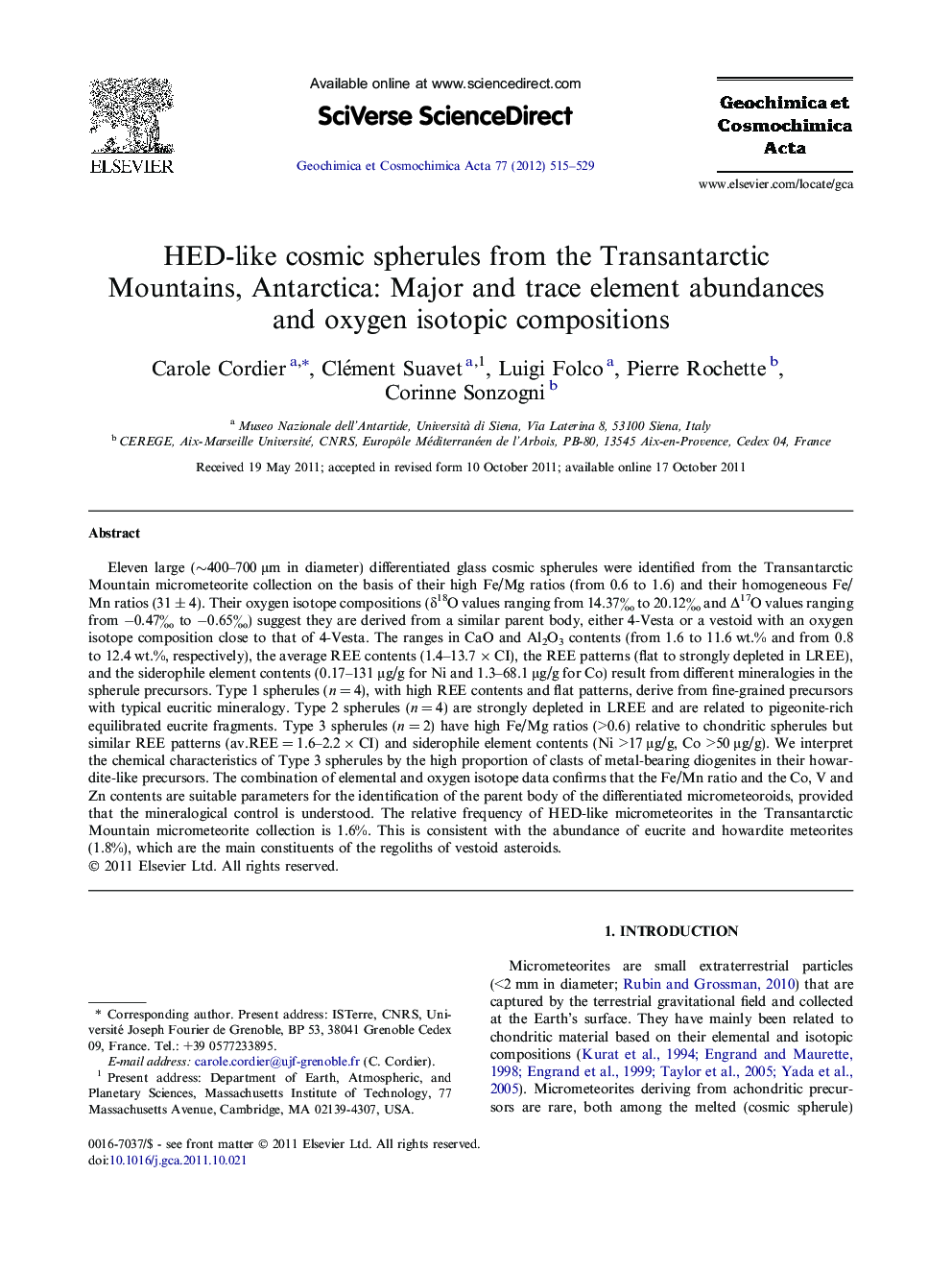| Article ID | Journal | Published Year | Pages | File Type |
|---|---|---|---|---|
| 6439400 | Geochimica et Cosmochimica Acta | 2012 | 15 Pages |
Abstract
Eleven large (â¼400-700 μm in diameter) differentiated glass cosmic spherules were identified from the Transantarctic Mountain micrometeorite collection on the basis of their high Fe/Mg ratios (from 0.6 to 1.6) and their homogeneous Fe/Mn ratios (31 ± 4). Their oxygen isotope compositions (δ18O values ranging from 14.37â° to 20.12â° and Î17O values ranging from â0.47â° to â0.65â°) suggest they are derived from a similar parent body, either 4-Vesta or a vestoid with an oxygen isotope composition close to that of 4-Vesta. The ranges in CaO and Al2O3 contents (from 1.6 to 11.6 wt.% and from 0.8 to 12.4 wt.%, respectively), the average REE contents (1.4-13.7 Ã CI), the REE patterns (flat to strongly depleted in LREE), and the siderophile element contents (0.17-131 μg/g for Ni and 1.3-68.1 μg/g for Co) result from different mineralogies in the spherule precursors. Type 1 spherules (n = 4), with high REE contents and flat patterns, derive from fine-grained precursors with typical eucritic mineralogy. Type 2 spherules (n = 4) are strongly depleted in LREE and are related to pigeonite-rich equilibrated eucrite fragments. Type 3 spherules (n = 2) have high Fe/Mg ratios (>0.6) relative to chondritic spherules but similar REE patterns (av.REE = 1.6-2.2 Ã CI) and siderophile element contents (Ni >17 μg/g, Co >50 μg/g). We interpret the chemical characteristics of Type 3 spherules by the high proportion of clasts of metal-bearing diogenites in their howardite-like precursors. The combination of elemental and oxygen isotope data confirms that the Fe/Mn ratio and the Co, V and Zn contents are suitable parameters for the identification of the parent body of the differentiated micrometeoroids, provided that the mineralogical control is understood. The relative frequency of HED-like micrometeorites in the Transantarctic Mountain micrometeorite collection is 1.6%. This is consistent with the abundance of eucrite and howardite meteorites (1.8%), which are the main constituents of the regoliths of vestoid asteroids.
Related Topics
Physical Sciences and Engineering
Earth and Planetary Sciences
Geochemistry and Petrology
Authors
Carole Cordier, Clément Suavet, Luigi Folco, Pierre Rochette, Corinne Sonzogni,
